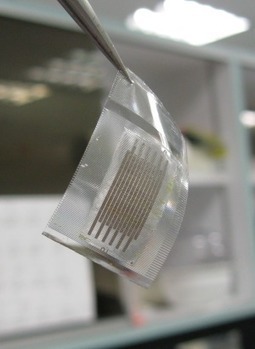Converting CO2 into usable energy with graphene nanosheets
(Nanowerk News) Imagine if carbon dioxide (CO2) could easily be converted into usable energy. Every time you breathe or drive a motor vehicle, you would produce a key ingredient for generating fuels. Like photosynthesis in plants, we could turn CO2 into molecules that are essential for day-to-day life. Now, scientists are one step closer.
Researchers at the U.S. Department of Energy's (DOE) Brookhaven National Laboratory are part of a scientific collaboration that has identified a new electrocatalyst that efficiently converts CO2 to carbon monoxide (CO), a highly energetic molecule.
Learn more / En savoir plus / Mehr erfahren.
https://www.scoop.it/t/21st-century-innovative-technologies-and-developments/?&tag=Graphene
https://www.scoop.it/t/21st-century-innovative-technologies-and-developments/?&tag=Nano



 Your new post is loading...
Your new post is loading...










Monitoring health may soon be as simple as applying a temporary tattoo.
Futurism's mission is to empower our readers and drive the development of transformative technologies towards maximizing human potential.
Learn more / En savoir plus / Mehr erfahren:
https://www.scoop.it/t/21st-century-innovative-technologies-and-developments/?&tag=Graphene